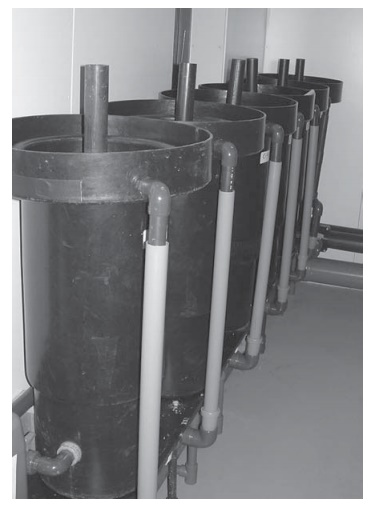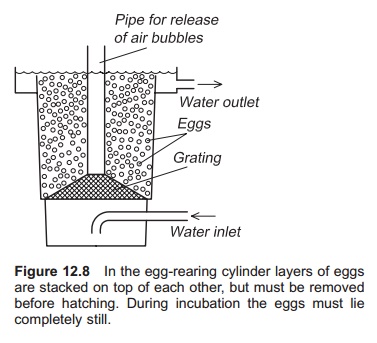Chapter: Aquaculture Engineering : Egg Storage and Hatching Equipment
Systems where the eggs must be removed before hatching
Systems where the eggs must be removed before hatching
In egg-rearing cylinders the eggs are layered on top of each other (Fig. 12.8), so this system cannot be used through to hatching, and for salmonids only to


the eyed egg stage. In these cylinders the water is taken in at the bottom and a distribution plate ensures that it is distributed evenly through the layers of eggs via an underflow. The water will then flow up through the layers of eggs and over the top edge of the cylinder to the outlet. To avoid air bubbles or clogging, the distribution plate must be set at an angle and there is an aeration pipe in the centre of the cylinder. From here air bubbles can go to the surface without passing through the layers of eggs in the cylinder. If the air bubbles must pass through the egg layers they may increase mortality by moving the eggs during a critical phase of development.
A commonly used egg-rearing cylinder contains approximately 30 l of eggs; the necessary water supply is 5–7 l/min. The great advantage of using these cylinders is that more eggs can be stored in a restricted area; up to 120 l/m2 floor area. The cylinders are often made of polyethylene (PE); typically 80 cm high and 50 cm diameter. Larger tanks of up to 200 l, may also be used with an up-flow of water, but here control of conditions is reduced.
Related Topics